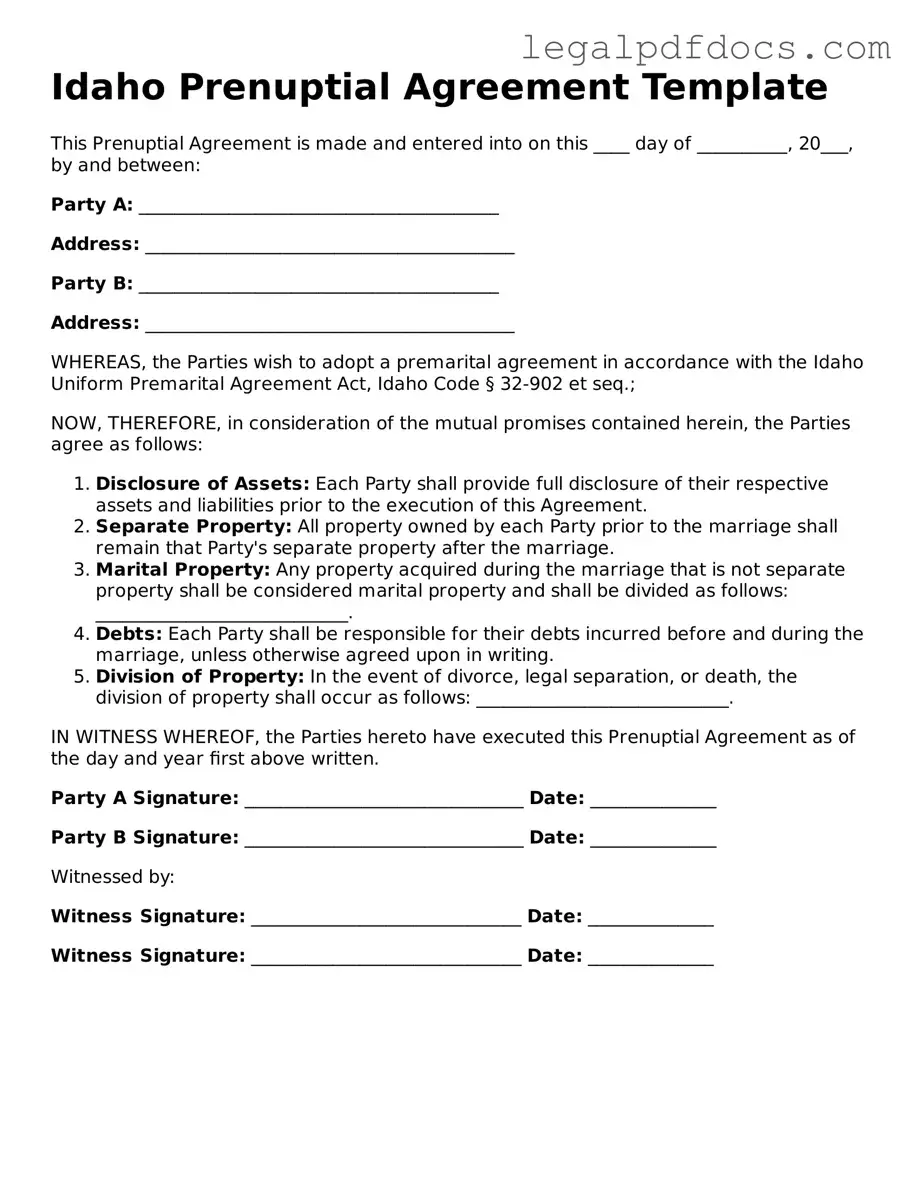In the state of Idaho, a prenuptial agreement serves as a vital tool for couples preparing for marriage. This legal document outlines the financial and property rights of each partner, ensuring clarity and protection in the event of a divorce or separation. Key aspects of the Idaho Prenuptial Agreement include the identification of separate and marital property, the division of assets and debts, and provisions for spousal support. Couples can also address issues related to inheritance and the management of shared expenses. By discussing these matters before tying the knot, partners can foster open communication and reduce potential conflicts in the future. Understanding the requirements for creating a valid prenuptial agreement in Idaho is essential, as it must be in writing and signed by both parties to be enforceable. Additionally, full disclosure of assets and liabilities is necessary to ensure fairness and transparency. This article will delve into the intricacies of the Idaho Prenuptial Agreement form, providing insights into its importance and practical considerations for couples contemplating marriage.
